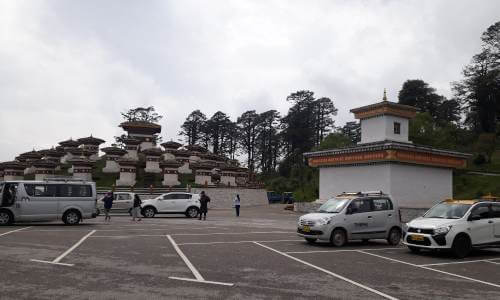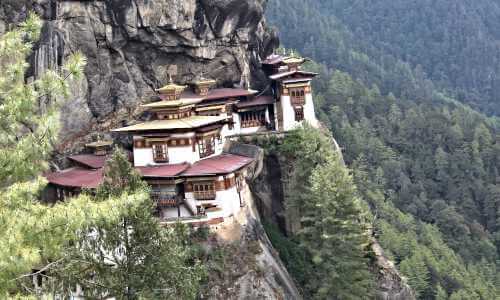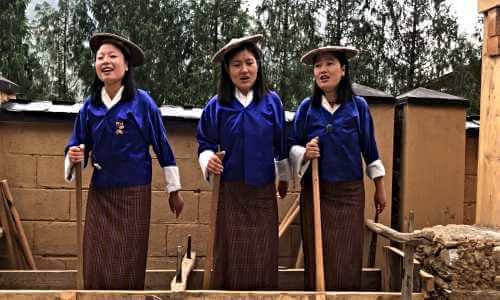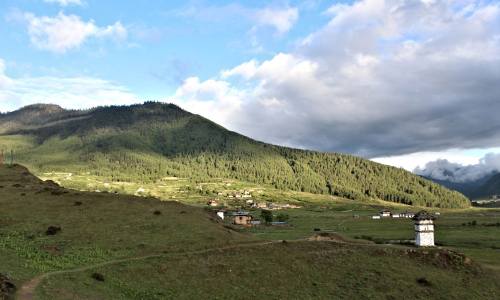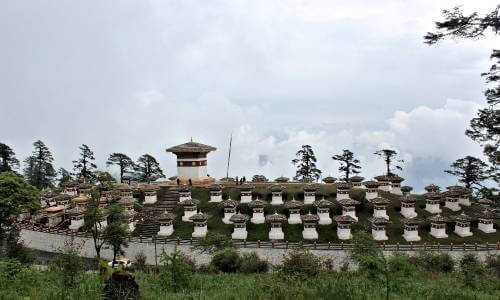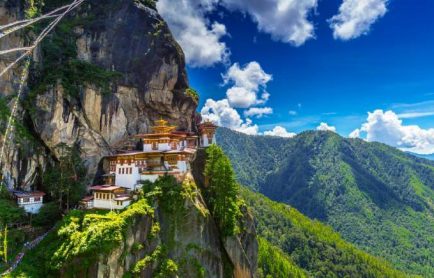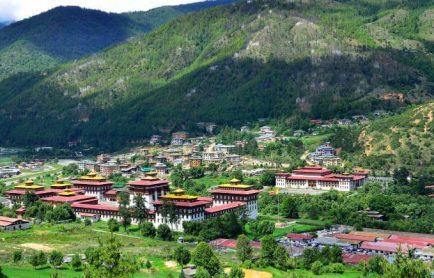National Symbols of Bhutan
The national symbols of Bhutan are established by both law and tradition. Of all, the national flag, emblem and the anthem are modern with the mythical Druk thunder featured. The others have traditional Buddhist mythology behind them which are believed to be much older than the kingdom itself. To explore the national animal, flower, bird, tree and more, one needs to travel to Bhutan to witness them all.
| S.No |
National Symbol |
Name of the National Symbol |
| 1 |
National Anthem |
The Druk Tsendhen |
| 2 |
National Animal |
Takin |
| 3 |
National Bird |
Raven |
| 4 |
National Flower |
The Himalayan Blue Poppy |
| 5 |
National Tree |
Himalayan Cypress |
| 6 |
National Language |
Bhutanese |
| 7 |
National Sport |
Archery (Dha) |
| 8 |
National Day |
17 December |
| 9 |
National Dress |
Gho and Kira |
| 10 |
National Dish |
Ema Datshi |
National Flag
Divided equally into two equal halves, the national flag of Bhutan was designed in 1947 by Mayum Choying Wangmo Dorji and modified in 1956 to take its final shape. The upper diagonal of the flag is yellow signifies the secular authority His majesty the King while the lower is orange signifies the Buddhist spiritual tradition. The flag features a white Druk (thunder dragon) which represents loyalty, patriotism and a great sense of belonging to the Kingdom.
National Emblem
The national emblem of Bhutan comprises a circle inside which two crossed vajras are placed over a lotus. At either side of the vajras, there is a male and a female white dragon with a wish-fulfilling jewel above them. There are four more jewels inside the circle where the vajras intersect. The lotus in the circle signifies the absence of defilements, the wish full-filling jewel signifies the sovereign power of the people, and the two dragons signifies the name of the Kingdom.
National Anthem
The Druk Tsendhen is the national anthem of Bhutan which was composed in the year 1953. The original lyrics of the anthem had twelve lines but later it was shortened to the present six-line version in the year 1964. In addition to this, the anthem is inspired by a Bhutanese folk tune ‘Thri nyampa med pa pemai thri’ (The Unchanging Lotus Throne), so there is a choreography associated to it as well.
National Animal
Takin, the rare mammal is the national animal of Bhutan which is associated with religious history and mythology. It is believed, Drukpa Kunley (Buddhist monk) took the heap of cow and bones of a goat to reassemble them into a new animal-Takin. For this reason, the animal has a very strange appearance. Today, the conservation status of Takin is vulnerable but few can be found in Motithang Takin Preserve.
National Bird
Raven, the national bird of Bhutan represents Gonpo Jarodongchen (the raven headed Mahakala) Bhutan’s guardian deity. It is believed that the deity took the form of a raven to guide and protect the king and people of Bhutan. The Raven lives in higher altitude places like Bumthang, Thimphu and Haa.
National Flower
The Himalayan Blue Poppy is the national flower of Bhutan which blooms in full after the harsh winter season. The local people call this delicate blue or purple-tinged flower ‘Euitgel Metog Hoem.’ Even though the flower is rare and is mostly grown at an altitude of 3500 m to 4500 m, one can spot them when visiting Phobjhika Valley, Chelela Pass and Dochula Pass.
National Tree
Himalayan Cypress is the national tree of Bhutan which is found in abundance especially near temples and monasteries, in the temperate zone between the elevation of 1800 m and 3500 m. Standing straight and strong, Cypress holds the capacity to survive on rugged harsh terrains which represent its firm spirit and simplicity.
National Language
A Sino-Tibetan Language, Dzongkha or Bhutanese is the sole and national language of Bhutan, spoken by over half a million people in the country. To make it even more simple, the literal meaning of Dzongkha is the language spoken in the Dzongs, massive fortresses serving as monasteries and administrative centres. Besides, the other two languages spoken in Bhutan are Tshanglakha and the Lhotshamkha.
National Sport
Archery (Dha) is the national sport of since the year 1971 when the kingdom became a member of the United Nations. The bow and arrow of the sport play a key role in many of the myths and legends of Bhutan. Archery is played during local festivals (tsechus); between public departments and ministries; during religious and secular public holidays in Bhutan; and between the dzongkhag and other regional teams.
National Day
The national day of Bhutan is celebrated on 17 December to commemorate the day in the year 1907 when Gongsar Wangchuk was crowned the first king of Bhutan at Punakha Dzong. The day is celebrated with much gusto as it is during this day when Bhutan was landed in a new era of peace and prosperity.
National Dress
Gho and Kira are considered to be the national dress of Bhutan which was introduced in the 17th-century. Men wear Gho, a long robe till the knee, tied at the waist with a handwoven kyera (belt). The Bhutanese women wear an ankle-length dress called the Kira, with a pair of komas (broaches with hooks) and a kyera on the waist. Under the Kira, women wear a wonju (blouse) and a toego (open jacket) is worn over the dress.
National Dish
Ema Datshi, a chilli and cheese stew is considered as the national dish of Bhutan. The Bhutanese people either use red or green chillies to prepare the dish. It is simple, easy to cook and delicious to the taste. The stew is either eaten right off the platter, with Bhutanese red rice or buckwheat noodles.
